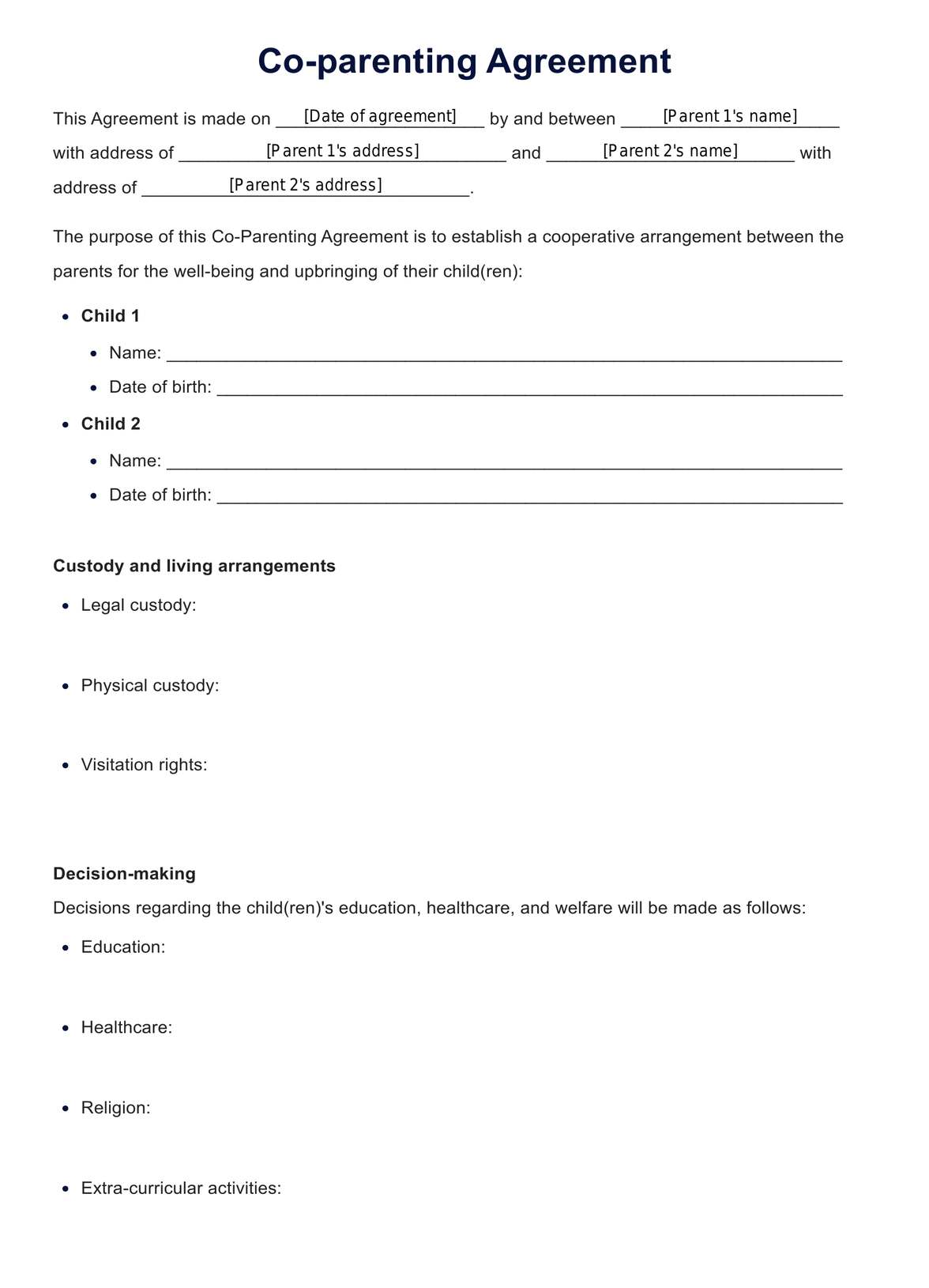The most common parenting plans include sole custody, joint custody, split custody, and parenting plan templates. In sole custody, one parent has primary physical and legal custody of the child. Joint custody involves both parents sharing physical and legal custody, while split custody occurs when siblings are divided between parents.

Co-Parenting Agreement Templates
Discover the benefits of using our free Co-Parenting Agreement Template. Streamline communication, reduce conflict, and focus on your child's best interests.
Co-Parenting Agreement Templates Template
Commonly asked questions
To write a parenting action plan, start by identifying specific goals and objectives for your child’s well-being. This may include areas such as education, health, and social development. Next, outline the responsibilities of each parent and establish clear communication strategies. Include provisions for decision-making, dispute resolution, and modifications as needed. Consult with a legal professional to ensure your plan aligns with local laws and regulations.
The three main types of co-parenting are cooperative, parallel, and conflicted. Cooperative co-parenting involves parents working together to make decisions and communicate effectively for the child’s benefit. Parallel co-parenting occurs when parents maintain separate households and make independent decisions, with minimal direct interaction. Conflicted co-parenting is characterized by ongoing disputes, lack of communication, and difficulty putting the child’s needs first.
EHR and practice management software
Get started for free
*No credit card required
Free
$0/usd
Unlimited clients
Telehealth
1GB of storage
Client portal text
Automated billing and online payments











